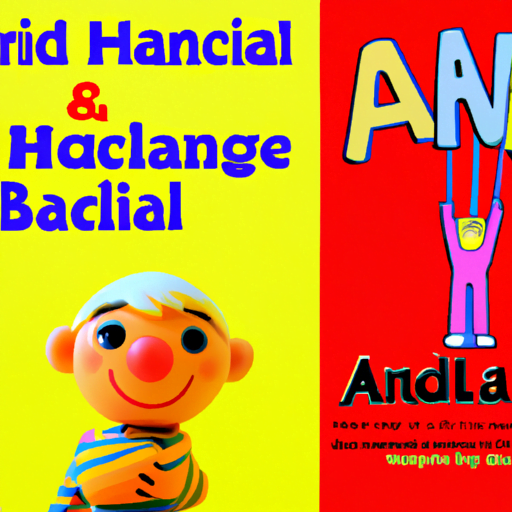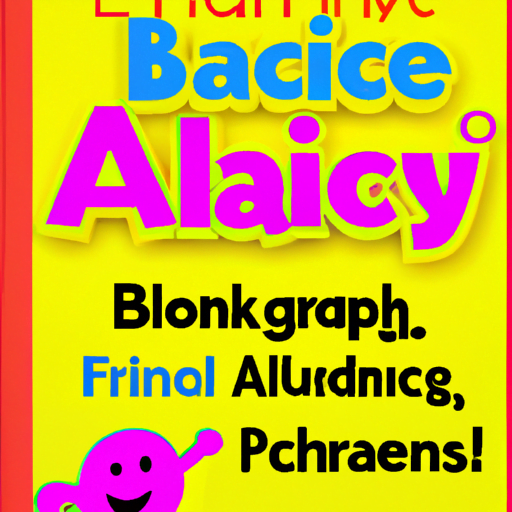
-
Table of Contents
- Typography in Children’s Book Design: Balancing Fun and Readability
- The Impact of Typography on Children’s Reading Experience
- Choosing Fonts for Children’s Books
- Case Studies: Successful Typography in Children’s Books
- 1. “The Very Hungry Caterpillar” by Eric Carle
- 2. “Where the Wild Things Are” by Maurice Sendak
- Strategies for Balancing Fun and Readability
- Conclusion
Typography in Children’s Book Design: Balancing Fun and Readability

Typography plays a crucial role in children’s book design, as it not only enhances the visual appeal but also affects the readability and overall experience of young readers. Finding the right balance between fun and readability is essential to create engaging and accessible books for children. In this article, we will explore the importance of typography in children’s book design and discuss strategies to achieve a harmonious blend of fun and readability.
The Impact of Typography on Children’s Reading Experience
Typography has a significant impact on how children engage with books and comprehend the text. The choice of fonts, font sizes, spacing, and layout can greatly influence their reading experience. Here are some key factors to consider:
- Readability: Children’s books should prioritize readability to ensure that young readers can easily decipher the text. Fonts with clear letterforms, appropriate spacing, and legible sizes are essential for a smooth reading experience.
- Engagement: Typography can enhance the visual appeal of a book and capture children’s attention. Fun and playful fonts can create a sense of excitement and make the reading experience more enjoyable.
- Comprehension: Well-designed typography can aid in comprehension by using visual cues to guide young readers. For example, using different font styles or sizes to distinguish dialogue, narration, or emphasis can help children understand the story better.
Choosing Fonts for Children’s Books
When selecting fonts for children’s books, it is crucial to strike a balance between readability and visual appeal. Here are some considerations:
- Clear Letterforms: Fonts with clear and distinct letterforms are essential for young readers who are still learning to recognize letters. Avoid overly decorative or complex fonts that may confuse or distract children.
- Appropriate Font Size: The font size should be large enough to ensure readability. Consider the target age group and adjust the font size accordingly. For younger children, larger fonts are generally more suitable.
- Child-Friendly Aesthetics: Choose fonts that reflect the playful and imaginative nature of children. Fun and whimsical fonts can capture their attention and make the reading experience more enjoyable.
- Font Variations: Using different font styles or variations can help differentiate between characters, dialogue, and narration. This can aid in comprehension and make the story more engaging.
Case Studies: Successful Typography in Children’s Books
Let’s explore some examples of children’s books that have effectively balanced fun and readability through typography:
1. “The Very Hungry Caterpillar” by Eric Carle
This classic children’s book features a unique typography style that complements the author’s distinctive collage illustrations. The use of bold and colorful fonts adds to the playful and vibrant nature of the story, while still maintaining readability.
2. “Where the Wild Things Are” by Maurice Sendak
The typography in this beloved book is carefully integrated with the illustrations to create a cohesive reading experience. The use of varying font sizes and styles helps convey the emotions and intensity of the story, capturing the imagination of young readers.
Strategies for Balancing Fun and Readability
Here are some strategies to achieve a harmonious balance between fun and readability in children’s book design:
- Typography Hierarchy: Establish a clear hierarchy by using different font sizes, styles, and colors to distinguish headings, body text, and dialogue. This helps guide young readers and improves comprehension.
- Whitespace: Utilize ample whitespace to enhance readability and prevent the text from appearing cluttered. Whitespace also provides room for illustrations and helps create a visually appealing layout.
- Illustration Integration: Integrate typography with illustrations to create a cohesive visual experience. The typography should complement the illustrations and enhance the overall storytelling.
- Testing and Feedback: Conduct usability testing with children to gather feedback on the readability and engagement of the typography. This feedback can help identify areas for improvement and ensure the design resonates with the target audience.
Conclusion
Typography plays a vital role in children’s book design, influencing readability, engagement, and comprehension. By carefully selecting fonts, considering readability factors, and implementing effective strategies, designers can strike a balance between fun and readability. The successful integration of typography and illustrations can create an immersive reading experience that captivates young readers and fosters a love for books.
